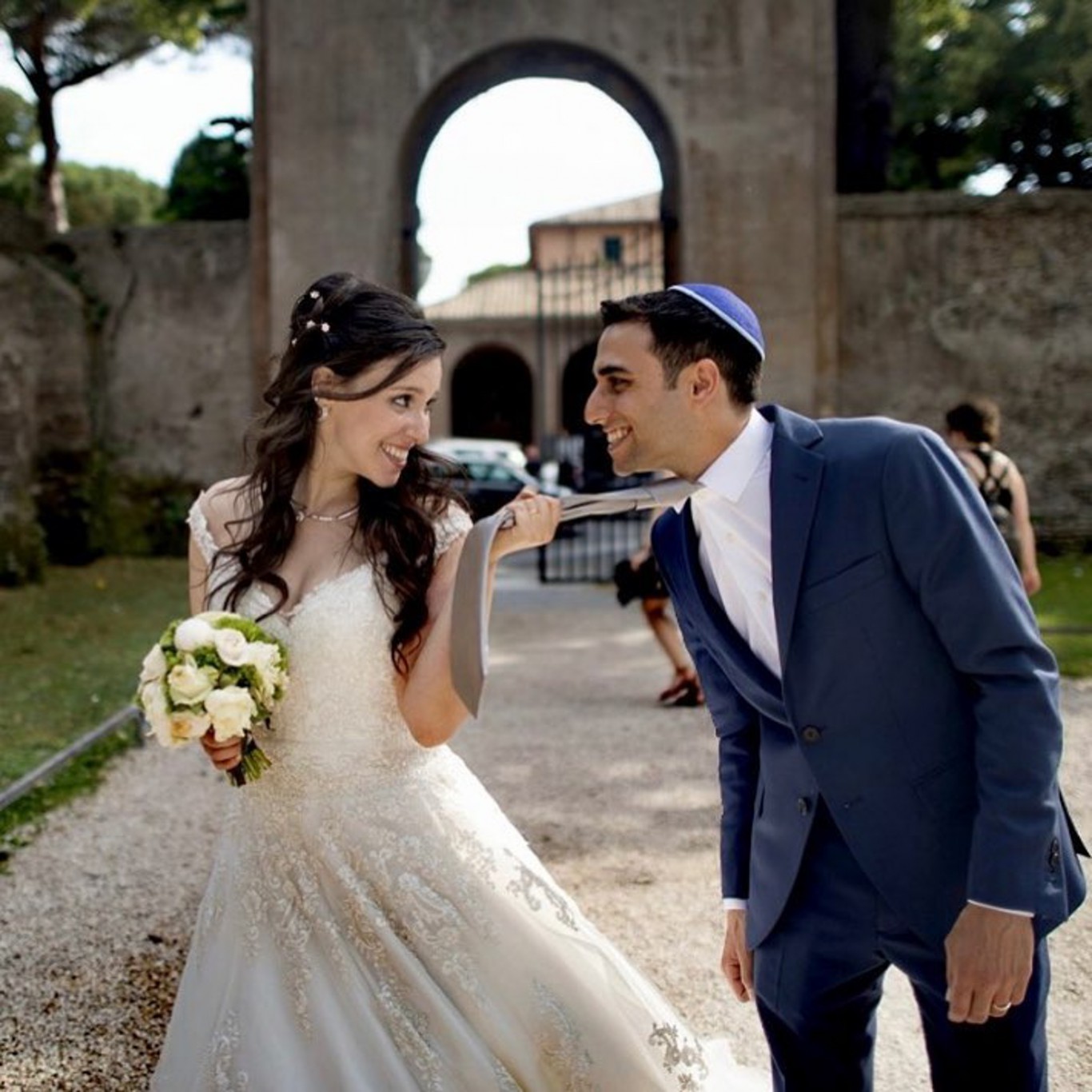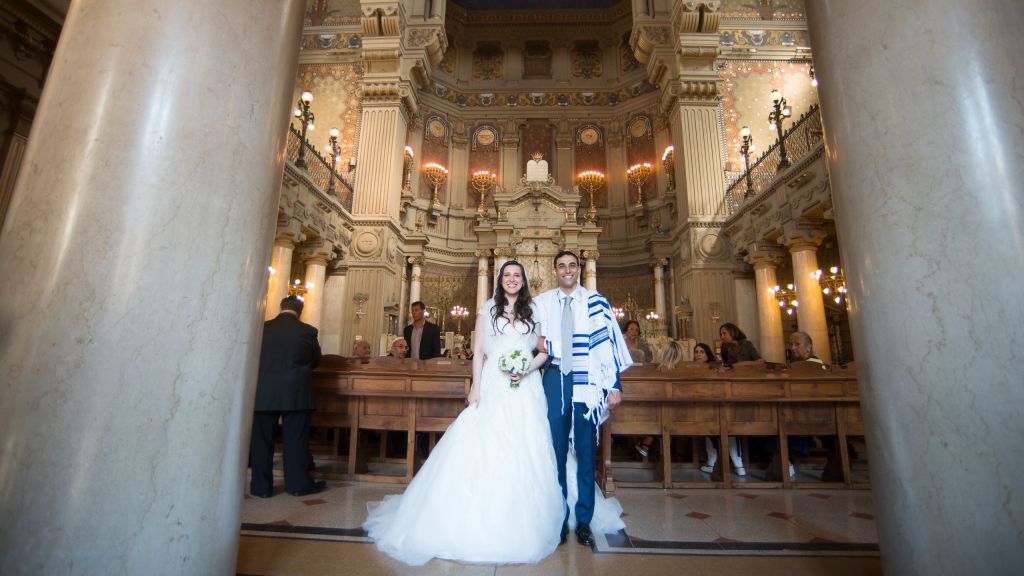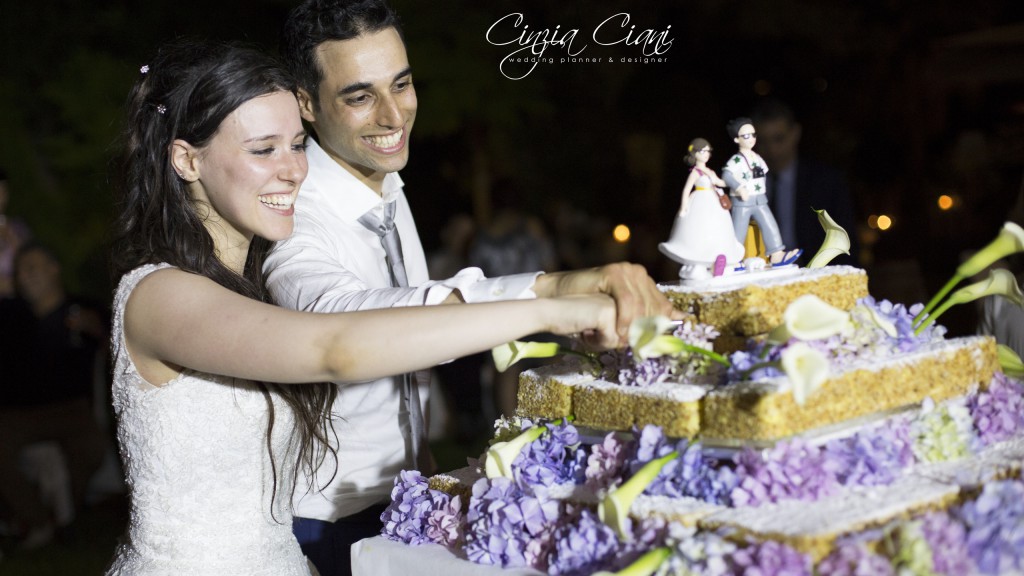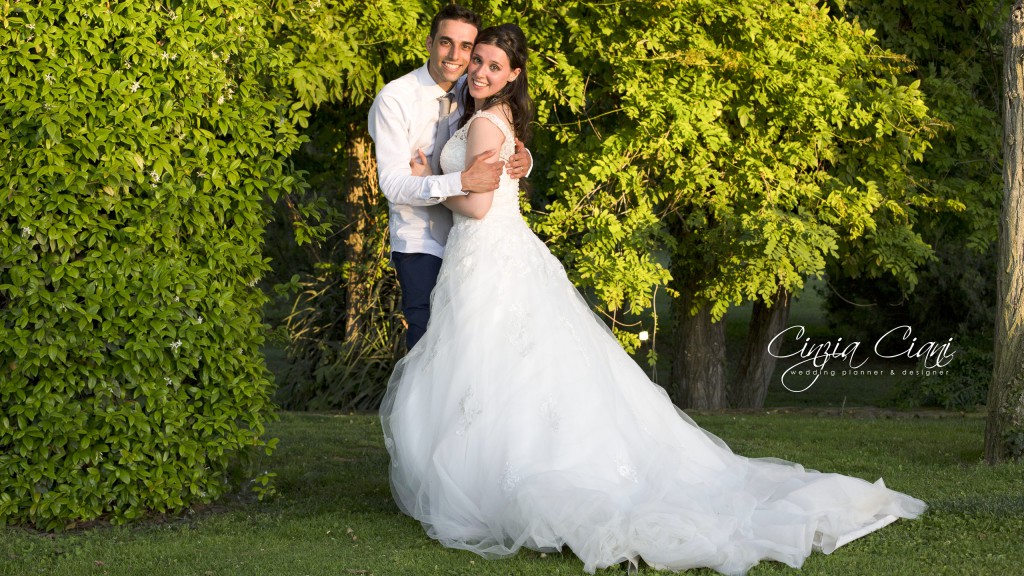Jewish Marriage
Cinzia Ciani Wedding Planner & Designer
Mishmarà
According to the tradition, the night before the celebration, the parents invite in their home the close relatives and a rabbi, who officiate the ceremony. After the religious ceremony the convivial part will begin, in which a small refreshment will be offered to all the participants, to whom will be donated, at the end of the evening, bags (chavod) containing sweets typical of Roman Jewish cuisine.
Marriage in Judaism is one of the most important duties and when a couple decides to marry, they must report to the rabbinical office which will communicate all the information necessary to establish the date of the marriage and to lay the foundations for the foundation of a house and a Jewish family.
In the act of publication, the spouses must declare that they intend to celebrate the marriage at the Tempio Maggiore in Rome or in another place and will have to hand in a request from the rabbinical office to the Civil Registry Office of the Municipality, in addition to the certificates required by law. Publications cannot be made on a Saturday, a Jewish holiday.




Fasting
The wedding day is considered a day of forgiveness and, as such, some couples choose to fast on their wedding day, just as they would on Yom Kippur (the day of atonement). The couple's fasting lasts until the first meal together after the wedding ceremony.
Bride veil
Before the ceremony, the groom approaches the bride for the beds, or the veil. He looks at her and then discovers the veil on her face. This means that his love for her is for his inner beauty, and also that the two are distinguished individuals even after marriage.
Ketubah
The ketubah is a Jewish agreement that describes the responsibilities of the groom to his bride. He gives the conditions that he will provide in marriage, the protections and rights of the brides, and in the case the couple chooses to divorce. The Ketubah are not religious documents, but are part of Jewish civil law, so there is no mention of God blessing the union. The Ketubah is signed by the couple and two witnesses before the ceremony, then it is read to the guests during the ceremony.
The Chuppah walk
In many communities there is the custom that the groom is led down to the Chuppah by two people, generally the older and wiser, one on his right and the other on his left, even for the bride there is this custom, deduced from the book of genesis.
Vows under the Chuppah
A chuppah has four corners and a covered roof to symbolize the new home they are building together. In some ceremonies, the four places of the chuppah are supported by friends or family members during the ceremony, supporting the life that the couple is building together, while in other cases it may be a structure decorated with flowers. The canopy is often made up of a tallit, or a prayer shawl, belonging to a member of the couple or their families.
Round
The bride traditionally walks around her husband three or seven times under the chuppah. Some people believe that this is to create a magical wall of protection from evil spirits, temptation and the looks of other women. Others believe that the bride symbolically creates a new family circle. Today, the bride and groom can move together or around them, drawing independent and complementary orbits.
Yichud
After the ceremony, tradition dictates that couples spend about 18 minutes in yichud. This habit allows the newly married couple to reflect privately on their new relationship and allows them only precious time to bond and rejoice. It is also customary for the bride and groom to share their first meal together as a husband and wife during the yichud. Ordinary meals differ from community to community and can range from the "golden soup" of the Ashkenazim (said to indicate prosperity and strength building) to the grandmother's chocolate cookiesJewish or not, it's a great idea for every couple to enjoy their first moments as a husband and wife alone together - what a romantic way to get off before the holidays. We have tried in this brief note to give a synthetic idea of the beauty of the rite of Jewish marriage.
Glass breakage - Mazel Tov!
When the ceremony ends, the groom (or in some cases the bride and groom) is invited to pass over a glass inside a cloth bag to break. Glass breakage has multiple meanings. Some say it represents the destruction of the Temple in Jerusalem. Others say it shows that marriage has pain and joy and is a representation of the commitment to stand up even in difficult timesThe cloth that holds the glass fragments is collected after the ceremony and many couples choose to incorporate it in a sort of memento of their wedding day. It use to shout "Mazel tov!" once the ceremony is over and the glass is broken. You will hear cheerful guests say "Mazel tov!" because the word has a similar meaning to "good luck" or "congratulations". There is no better time to say "mazel tov" than in a wedding! The glass is usually a glass cup, wrapped in fabric. glass with the right foot.
Sheva B'rachot: seven blessings
The seven blessings, called Sheva B'rachot, come from ancient teachings. They are often read in Hebrew and English and shared by a variety of family or friends, just as friends and family are invited to read in other types of ceremonies. Blessings focus on joy, celebration and the power of love. They begin with the blessing on a glass of wine, then progress into larger and celebratory declarations, ending with a blessing of joy, peace, companionship and the opportunity for the bride and groom to rejoice together.

